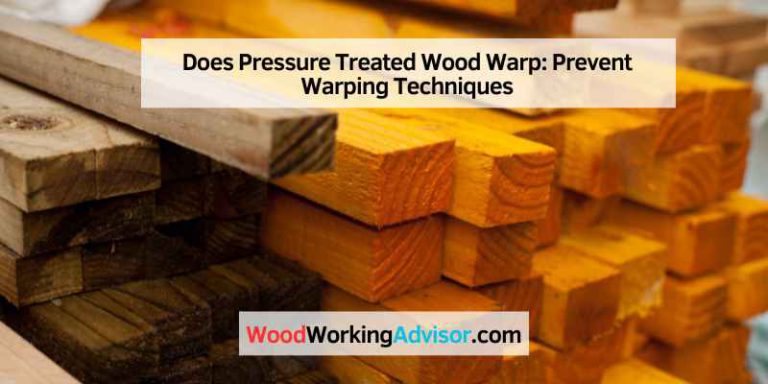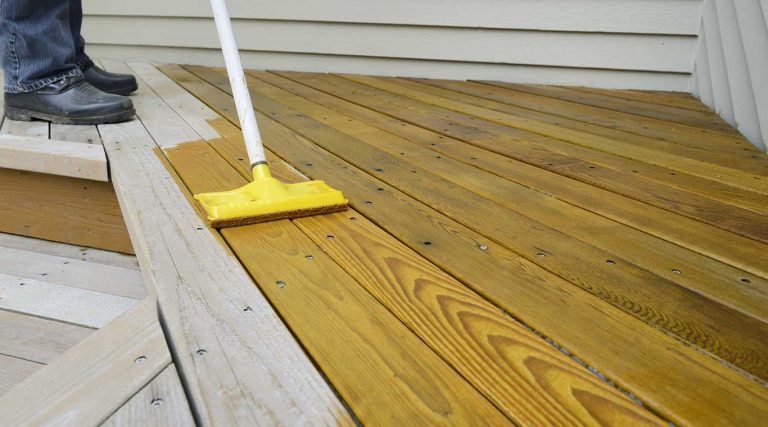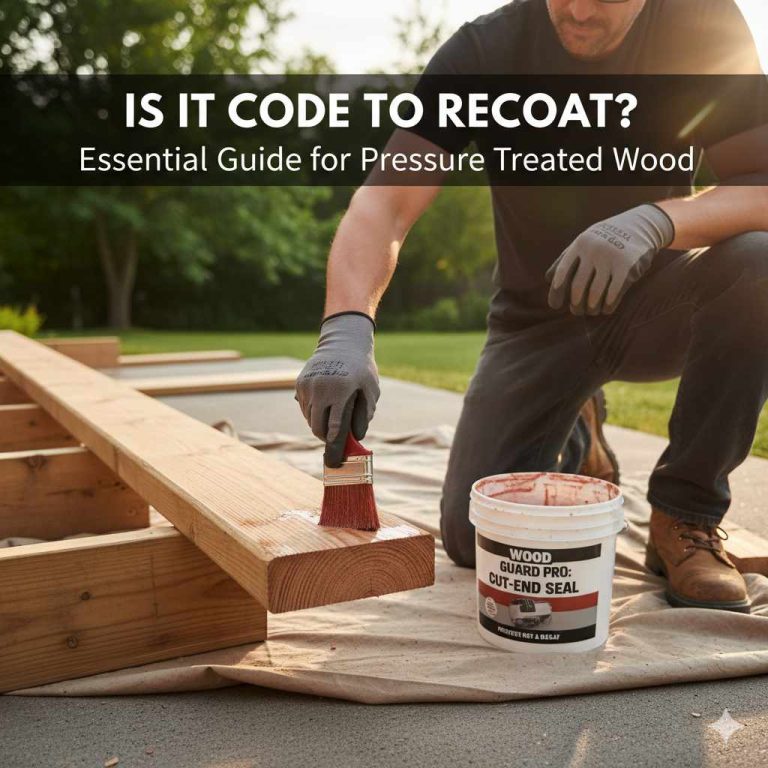How Long Does It Take Pressure Treated Wood to Dry? Quick Guide
Pressure treated wood typically takes several weeks to several months to dry completely, depending on the treatment and climate. It is important to ensure that the wood is dry before painting, staining, or sealing it.
A simple water test can be done by placing a few drops of water on the wood. If the water beads up, the wood is not yet dry and needs more time. If the water absorbs quickly into the wood, it is dry and ready to be treated.
It is recommended to wait until the wood is completely dry before applying any finishes to ensure proper adhesion and longevity of the coating.
Introduction To Pressure Treated Wood
Pressure treated wood typically takes several weeks to months to dry completely, influenced by treatment type and climate. To check if it’s ready for staining or sealing, conduct a simple water test: if water absorbs quickly, your wood is dry and ready for finishing.
Pressure treated wood is a type of lumber that has been infused with preservatives to protect it from decay, rot, and insect damage. This process involves placing the wood in a pressure chamber and forcing chemicals into the fibers, extending its lifespan.
Benefits Of Using Pressure Treated Wood
- Increased durability and longevity
- Resistance to decay, rot, and insects
- Cost-effective compared to untreated wood
- Wide availability in various sizes and types
Common Uses In Construction
- Decking and outdoor structures
- Fencing and landscaping projects
- Structural support beams and posts
- Retaining walls and raised garden beds
Understanding Moisture Content
Understanding moisture content in pressure-treated wood is crucial. It typically takes several weeks to months for pressure-treated wood to dry completely, depending on treatment and environmental factors. Conducting a simple water test can determine if the wood is ready for staining or sealing.
Pressure treated wood is a popular choice for outdoor projects because it can withstand harsh weather conditions and resist rot and decay. However, before using pressure treated wood, it is important to ensure that it has dried properly. Understanding moisture content is crucial when it comes to working with pressure treated wood.
Factors Affecting Wood Moisture
Several factors can affect the moisture content of pressure treated wood. The type of wood, the level of treatment, and the climate conditions are just a few examples. The moisture content of pressure treated wood should be below 20% before using it in any outdoor project. If the moisture content is too high, it can cause warping, twisting, and splitting of the wood.
Measuring Moisture Levels
Measuring the moisture content of pressure treated wood is an important step in ensuring that it has dried properly. There are several tools available to measure the moisture levels of wood, including moisture meters and pinless moisture meters. These tools can help you determine if the wood is ready to be used in your outdoor project.
In conclusion, understanding moisture content is crucial when working with pressure treated wood. Factors affecting wood moisture and measuring moisture levels are important aspects to consider before using pressure treated wood in any outdoor project. By ensuring that the wood has dried properly, you can avoid potential issues and ensure that your project lasts for years to come.
Average Drying Times
Pressure treated wood can take several weeks to dry completely, depending on the climate and treatment. To check if it’s dry, conduct a simple water test. If the water is absorbed quickly, the wood is ready for sealing or staining.
If it beads up, allow more time for drying before treating.
Seasonal Variations
The drying time of pressure-treated wood can be influenced by the season or weather conditions. In general, the drying process is slower during the winter months due to the colder temperatures and higher humidity levels. Meanwhile, the wood may dry faster during summer when temperatures are higher, and the air is drier.
Drying Time Expectations
The drying time of pressure-treated wood varies depending on the type of wood and the treatment process used. On average, it can take anywhere from a few days up to several weeks for the wood to dry completely. The wood may appear dry to the touch, but it may still contain moisture inside, which can affect its stability and durability.
To ensure that the wood is dry enough for your desired application, you can use a moisture meter to measure the moisture content. The recommended moisture content for pressure-treated wood is around 15-19%. If the moisture content is higher than this, you may need to wait for the wood to dry further before proceeding with your project.
In conclusion, the average drying time for pressure-treated wood can range from a few days to several weeks, depending on the type of wood and the treatment process used. It’s important to ensure that the wood is dry enough for your desired application to ensure its stability and durability. By understanding the seasonal variations and drying time expectations, you can better plan and execute your project with pressure-treated wood.
The Role Of Climate
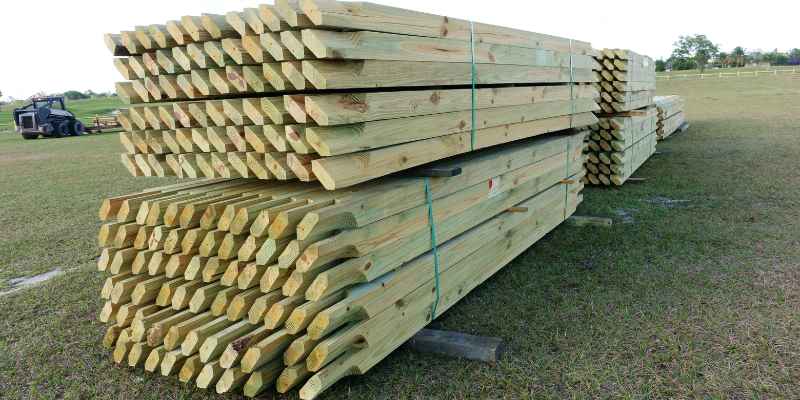
When it comes to drying pressure treated wood, the role of climate cannot be ignored. The climate conditions, including humidity and temperature, play a crucial role in determining how long it takes for pressure treated wood to dry.
Impact Of Humidity
Humidity has a significant impact on the drying process of pressure treated wood. High humidity levels can slow down the drying time, while low humidity levels can speed it up. Moisture in the air can prevent the wood from releasing its own moisture, leading to a longer drying time. On the other hand, dry air can help facilitate the evaporation of moisture from the wood, resulting in a quicker drying process.
Temperature Effects On Drying
The temperature also plays a crucial role in the drying of pressure treated wood. Warmer temperatures can accelerate the drying process, while colder temperatures can slow it down. When the temperature is high, the moisture in the wood evaporates more quickly. Conversely, in colder temperatures, the moisture evaporates at a slower rate.
It’s important to note that the combination of temperature and humidity is what ultimately determines how long it takes for pressure treated wood to dry. For example, in a hot and dry climate, the wood may dry faster compared to a cold and humid climate.
In conclusion, understanding the impact of climate on the drying process of pressure treated wood is crucial. By considering the humidity levels and temperature in your specific climate, you can estimate how long it will take for the wood to dry and plan your projects accordingly.
Drying Before Use
Before using pressure-treated wood for any project, it’s crucial to ensure that the wood is adequately dried. Properly dried wood will be more stable, resistant to warping, and ready for painting, staining, or sealing. This process is essential to achieve the best results and longevity for your project.
Importance Of Proper Drying
Properly drying pressure-treated wood is crucial to ensure that it’s ready for use in construction or outdoor projects. It helps to minimize the risk of warping, twisting, or shrinking after installation, which can lead to structural issues and affect the overall appearance of the project.
Signs Wood Is Ready For Installation
Before using pressure-treated wood, it’s important to look for signs that indicate the wood is ready for installation. Some key indicators include the wood feeling dry to the touch, a decrease in its overall weight, and the absence of moisture on the surface. Additionally, if the wood has turned a grayish color, it’s likely ready for use.
Accelerating The Drying Process
Accelerating the drying process of pressure-treated wood can take several weeks to several months, depending on the treatment and climate. To determine if the wood is dry and ready for treatment, conduct a simple water test. If the water absorbs into the wood quickly, it’s ready to be sealed or stained.
When working with pressure treated wood, waiting for it to dry can be a test of patience. However, there are methods to accelerate the drying process, ensuring that your wood is ready for use in a shorter period of time.
Methods To Reduce Drying Time
- Use a moisture meter to monitor the moisture content of the wood. This will help you determine when the wood has reached an acceptable level of dryness.
- Utilize a dehumidifier in the drying area to remove excess moisture from the surrounding air, expediting the evaporation of water from the wood.
- Position the wood in a well-ventilated area with good air circulation to facilitate the drying process.
- Apply a drying agent or wood preservative to the surface of the wood to assist in the removal of moisture.
Tips For Storing Wood During Drying
- Stack the wood with spacers between each layer to promote airflow and even drying.
- Ensure the wood is stored in a dry, sheltered location to prevent reabsorption of moisture from rain or humidity.
- Protect the wood from direct sunlight to prevent excessive drying and potential warping or cracking.
Potential Issues With Premature Use
Premature use of pressure treated wood can lead to potential issues. It is important to allow the wood to dry properly before any further treatment or installation. This drying process can take several weeks to months, depending on the treatment and climate conditions.
Risks Of Working With Wet Wood
Using wet pressure-treated wood can lead to various issues, affecting the quality and longevity of your project. Wet wood is prone to warping, twisting, and cracking, compromising the structural integrity of the project.
Consequences Of Early Staining Or Sealing
Staining or sealing pressure-treated wood before it’s fully dry can result in poor adhesion and a blotchy finish. This premature treatment can trap moisture within the wood, leading to mold, mildew, and premature decay.
Maintenance Tips
It is essential to ensure that pressure-treated wood is completely dry before painting, staining, or sealing it. The drying time varies depending on the treatment and climate, and it may take several weeks to several months to dry out completely.
A simple water test can determine if the wood is dry enough for treatment. If the water quickly absorbs into the wood, it is ready to be sealed or stained.
Protecting Your Wood Post-drying
After pressure-treated wood has dried properly, ensure to apply a water-repellent finish to protect it from moisture.
Long-term Care For Pressure Treated Wood
Regularly inspect your pressure-treated wood for any signs of damage and apply a fresh coat of sealant every 1-3 years.
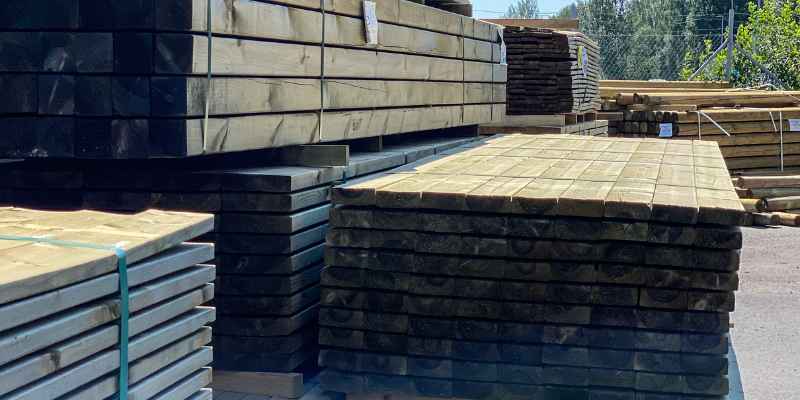
Frequently Asked Questions
How Do You Know When Pressure-treated Wood Is Dry?
To know if pressure-treated wood is dry, you can perform a simple water test. Place a few drops of water on the wood surface. If it quickly absorbs the water, it’s dry and ready for sealing or staining. If the water beads up, you’ll need to wait a few more days and recheck.
It’s important to ensure the wood is completely dry before applying any coating to prevent damage.
What Is The Fastest Way To Dry Pressure-treated Wood?
To dry pressure-treated wood quickly, allow it to air dry for a few days. Test by sprinkling water – if absorbed, it’s ready for sealing or staining.
How Long Should Pressure-treated Wood Dry Before Installing?
Pressure-treated wood should dry for a few days before installation, but it can take up to a couple of weeks.
What Happens If You Stain New Pressure-treated Wood Too Soon?
Staining new pressure-treated wood too soon can cause issues. It is important to let the wood dry properly before staining. To determine if the wood is dry, perform a water test. If the water absorbs quickly, the wood is ready for staining.
However, if the water beads up, more drying time is needed. Waiting a few days and retesting is recommended. Properly dried wood ensures better adhesion and longevity of the stain.
Conclusion
The drying time for pressure treated wood can vary depending on factors such as climate and treatment. It is important to ensure the wood is dry before painting, staining, or sealing to achieve the best results. Performing a water test can help determine if the wood is ready for treatment.
It is recommended to wait a few days and retest if the water beads up, indicating that the wood is still wet. By allowing the wood to dry properly, you can ensure a successful and long-lasting project.


